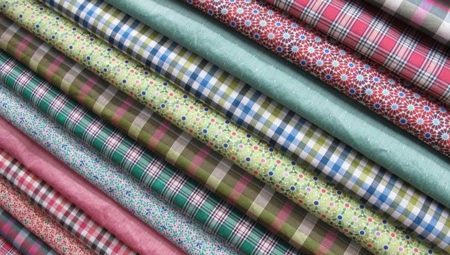For everyone, a full sleep is important. And it can be ensured not only by silence and a comfortable mattress, but also by high-quality bedding. The sheet is in spools, and the silk duvet cover is constantly moving out - which means you have chosen the wrong fabric. In addition to a very inexpensive calico, expensive satin, expensive silk for sewing bed linen, poplin and percale are taken - fabrics of an average price category.
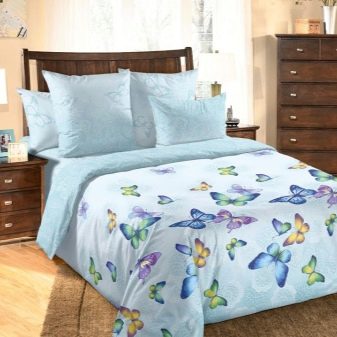
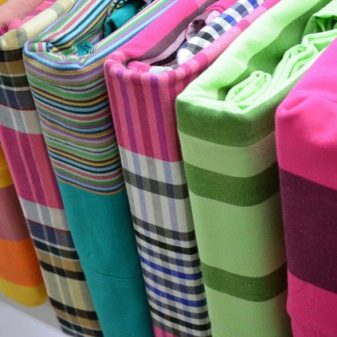
Poplin Characteristics
Back in the 14th century Italians invented a special "papal" fabric. This is how it translates from Italian popeline. It was the fabric of wealthy people, because they wove it from silk. Moreover, it was two-sided: one-color on one side and patterned on the other. Today, poplin is a 100% cotton fabric or with the addition of synthetic fibers. It is used for sewing everyday clothes, including children's clothes, night pajamas and shirts, curtains and towels. For luxury bedding, natural wool and silk are added to cotton. But the main thing is not a composition, but a way of weaving the threads.
It was in the Middle Ages that they came up with the use of thinner threads for the base of the canvas and twice as thick for the weft. As a result, the fabric is thin, a small transverse scar is visible on its front side. Modern poplin has a density of 110 to 120 grams per square meter (high-quality calico or satin has approximately the same density). In terms of color, poplin is bleached, dyed, multi-colored or printed.
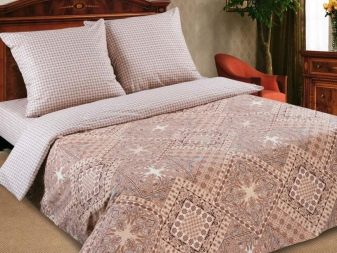
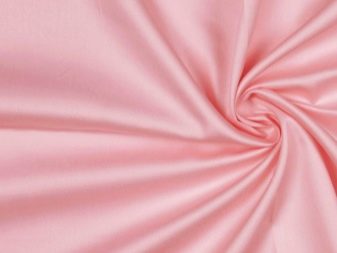
The fabric has a number of advantages: softness, silky tint, resistance to bending, high density, affordable price, beautiful appearance (including 3D effect).Over time, buyers realize that poplin clothes do not require ironing, do not deform, breathe well and retain heat perfectly. Under natural tissue, the body does not sweat, does not feel tactile discomfort. Things can withstand up to 200 washings at a temperature of 30 degrees and do not require special care. The material is inert to static electricity, i.e. not electrified.
But there are no perfect things. Since woolen or silk threads are used in the manufacture of bed linen, the products often give strong shrinkage during washing. In addition, poorly stained fabric can shed. Subtlety leads to the fact that through the canvas the base is visible (pillow, mattress, blanket).

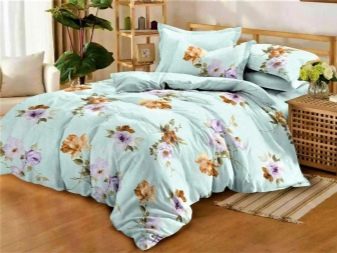
Features of percale
It is a cotton fabric with a very dense yarn weave of medium thickness yarn (a similar fabric of a thin thread - cambric). The Persian pargal from India came to Europe, where the Frenchman Anne-Robert-Jacques Turgot in 1774 decided to use percale soaked in linseed oil for sewing sails. By the way, on the ship and aircraft construction (for sewing parachutes and sheathing aircraft elements), this concept has a masculine gender. When this word is used in the sewing business, fabric is spoken of in a feminine fashion.
Now percale is used in parachuting and sailing, but bed linen and covers are sewn from it., since dense fabric does not allow fluff-feather components and other types of fillers to pass through. Children’s and women’s clothes are sewn from printed and one-colored perkals. Percale is made from untwisted quality paper long-fiber cotton yarn.
Extraordinary strength is achieved by sizing, that is, processing with adhesive composition of each linen fiber. As a result, the threads do not fluff, and the canvas becomes smooth.


Due to the use of glue, it is necessary to do the first washing of the thing correctly: it should be delicate at a temperature of 20 degrees, without a strong spin. In the future, it is also recommended to wash bedding when using the delicate regime and a water temperature of 60 degrees. When washing, bleach should not be used, but conditioners and softeners are welcome. This will not only give the laundry a pleasant smell, but also simplify ironing. With each wash, things will be softer and more pleasant to the touch. Experts say that percale can withstand up to 1000 washings.
Thus, percale has many positive characteristics.
- Very high strength.
- High abrasion resistance for cotton fabrics. The service life of the products is eight years.
- Density - 130-150 grams per square meter. This is a high figure for cotton fabrics.
- The fabric is slightly deformed and does not form spools on the surface.
- Due to the fact that the yarn is not twisted, the fabric is smooth and soft to the touch.
- The ability to maintain the required temperature. No wonder this fabric appeared in hot India - percale has a cooling effect. At the same time, in the cold season, it perfectly retains heat.
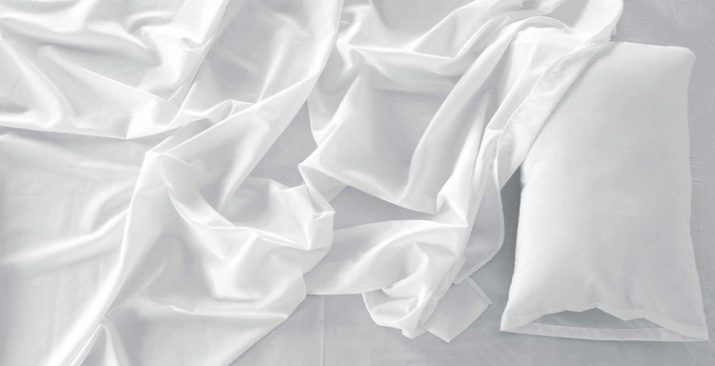
- The use of dressing led to resistance to ultraviolet rays, which means that the picture does not fade for a long time.
- The special technology of weaving makes the fabric silky.
- It is easy to dye, not only in the form of yarn, but also when applying prints and 3D drawings.
- If the fabric is made of 100% cotton, then the bed set will have a high level of hygroscopicity, and the body will not sweat under the covers.
- Not subject to electrification.
- The presence of a bed set of percale is prestigious to have in any home.
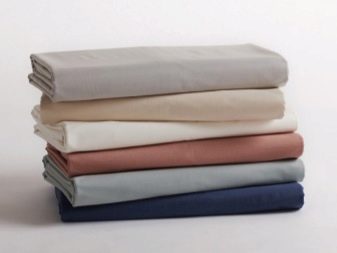
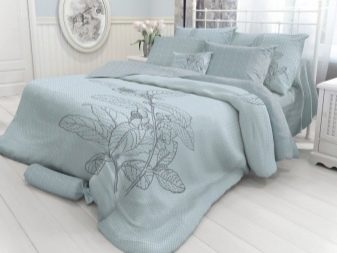
There are several negative points due to which buyers are in no hurry to buy bed linen made of percale.
- High creasing rate: after washing the laundry, not only ironing will be required, but also, possibly steaming.
- Modern manufacturers have begun to add artificial fibers to natural fibers. This reduces the price of the product, but worsens its quality.Such a bed set will let air and moisture pass worse, which will lead to restless sleep due to excessive sweating.
- At the beginning of the purchase, linen crunches due to the use of glue, although with time after washing this effect will disappear.
And yet, percale is a royal material, with its appearance and quality resembling natural silk.

Principal differences
Percale and poplin have fundamental differences.
- The difference in the thickness of the threads used in the production. In the manufacture of poplin, threads of different thicknesses are used along the weft and warp, which gives a special appearance to the fabric. In the production of percale threads of the same thickness are used.
- The production is also distinguished by technology: poplin is woven according to the double-twisted principle - double torsion of the thread, while percale is created by the old method of weaving (one smooth, untwisted thread is twisted crosswise).
- The use of sizing technology in the production of percale and the absence of this in the manufacture of poplin is the third difference. It makes percale much stronger.
- For housewives, the more important difference is the need for ironing a more "luxury" percale. While the more affordable poplin does not need it.
- If we compare poplin and percale in the light, it will be clearly noticeable that poplin is more “holey” material, and percale is more dense.
- Percale has a low percentage of shrinkage during washing, which allows you to choose the right size according to size at the time of purchase.
In the rest, not even every specialist will at first glance determine what material is in front of him: poplin or percale.
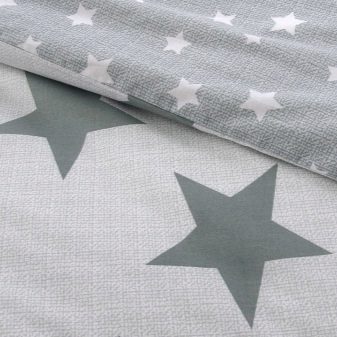
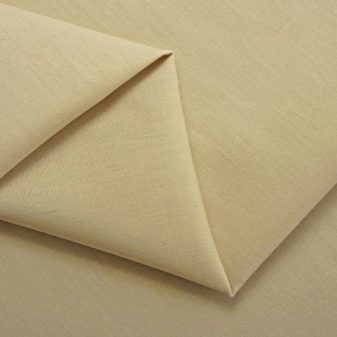
How are fabrics different from satin and calico?
All of these fabrics are cotton. The difference is in the production technology, which means in the further appearance, strength, price. The canvas made of satin is soft and tender, with gloss, almost does not crease. Sleeping on such a non-slip sheet is very nice. The effect is achieved thanks to the method of weaving yarns, which is called “satin”. Thin double twisted threads form a diagonal hem on the front side. High-quality satin has a high density (higher than poplin, closer to percale).
After mercerization (treatment of the fabric with concentrated alkalis), the fabric becomes stronger, more durable and resistant to dyeing. Satin bed linen has, perhaps, all the positive characteristics for a cozy good night. Therefore, it is called a substitute for silk. Moreover, the material is much cheaper than silk, but significantly more expensive than poplin, percale or calico.
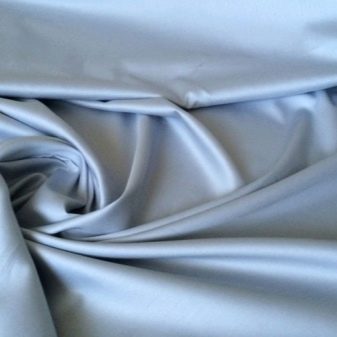
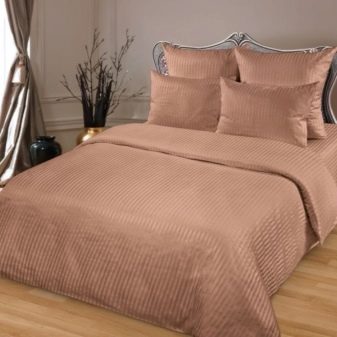
Satin will last about 8 years and outlast three to four hundred washings. The densest type of satin (satin jacquard) is also the most beautiful. It is textured, with a convex pattern. But hesitates, almost like a percale. Coarse calico is the cheapest fabric in the line of the listed. Linen weaving of filament fibers of the same thickness forms a "cross", overlapping one another. Coarse calico has several types, which are very different from each other in density, which means in appearance, durability and price.
- Bleached or one-colored fabric with a density of 142 grams per square meter. It is used for beds in public institutions with a bed fund (sanatoriums, hotels, hospitals, boarding houses).
- Lux with a density of 125 - the highest quality look, because in the manufacture of thinner, but more durable threads are used.
- Ranfors It is more similar to poplin because of its high density, but is still considered a type of calico.
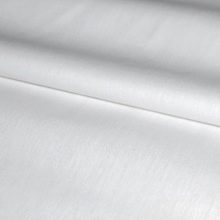
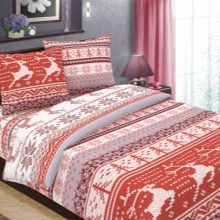
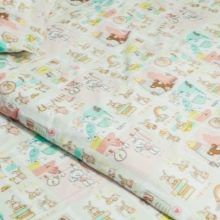
- "Standard" - density of 125 grams per square meter.
- "Comfort" - 120 units.
- Light – 110.
- Sparse calico with a density of 80 grams per square meter more like chintz.
An unpretentious buyer can always choose a bedding set from coarse calico in his pocket. This fabric almost does not shrink, most often does not fade, passes moisture well, has hypoallergenic properties, therefore allergy sufferers appreciate it.
Moreover, the lower the density of the web, the more rough and loose the fabric looks. On the canvas quite often there are thickening of the threads, which makes the linen rough. In the process of washing and drying, calico is wrinkled quite strongly, spools are often formed on it.
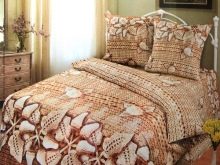
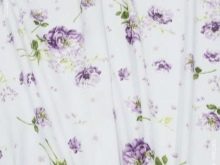
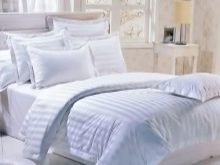
Which is better to choose?
If this is your first time purchasing poplin bed linen or percale and don’t know what to stop at, determine your selection criteria. Typically, sheets with pillowcases and duvet covers are selected according to the following criteria.
- The composition of the material. Knowing that both fabrics were initially cotton, you should pay attention to additives: wool and silk in poplin will shrink, and polyester in percale will make air permeability more difficult.
- Production technology. The addition of the adhesive composition of the percale fiber will make the laundry much stronger, but at the same time it will add a crunch to the fabric.
- Staining. The same glue will allow more thorough dyeing of fabrics and provide longer preservation of the original color. While poplin can fade from washing, colors will gradually fade.
- Strength is definitely much higher percale. Look at the fabric in the light or put it on your hand, compare it with poplin and see for yourself.
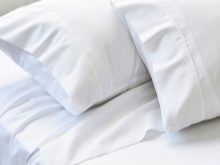

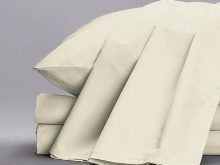
- That is why the service life of the percussion kit will be several years longer.
- But only if it is washed correctly, while it is much easier to care for poplin.
- By the degree of creasing, the poplin definitely wins, which can not be ironed at all, since it does not crease.
- Poplin is also a softer and more delicate material.
- Both materials (if they are 100% natural) pass air well, are hygroscopic, and are not electrified.
- Percale has a richer appearance, and poplin has a more interesting texture.
- The price of both fabrics is about the same (percale is a bit more expensive).
Have a good choice!
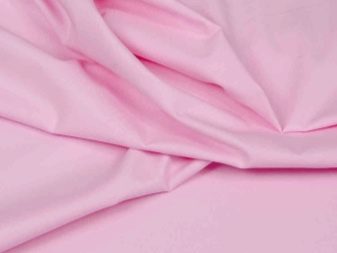

In the next video, you will find an overview of bed linen made of percale, poplin and calico.
